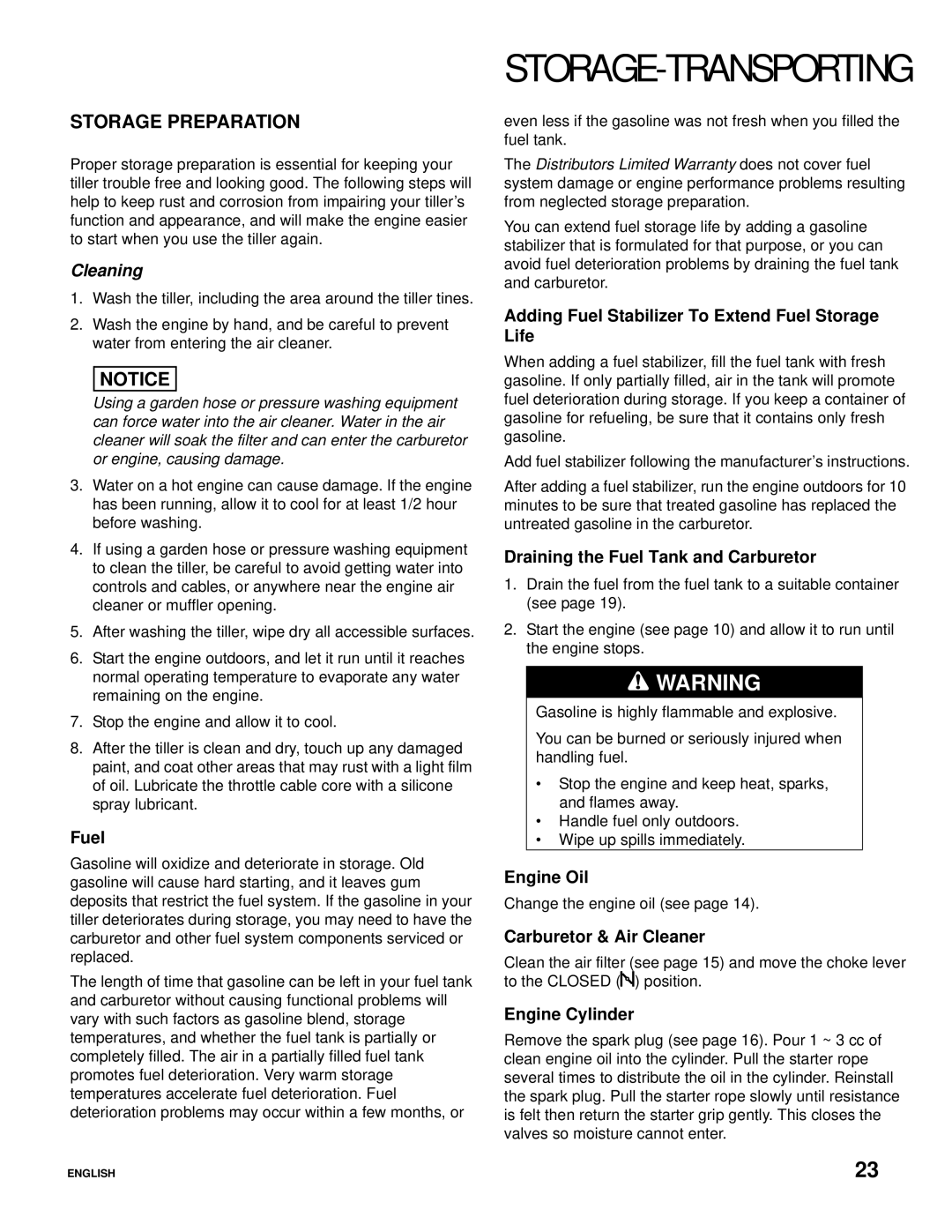Honda Mini-Tiller, FG110 specifications
The Honda Power Equipment FG110 Mini-Tiller is a compact and versatile gardening tool designed to simplify soil preparation for gardeners and landscapers alike. With its robust engineering, user-friendly features, and advanced technologies, the FG110 stands out as an essential machine for both home users and professionals.One of the main features of the FG110 is its lightweight design, weighing in at just 29 pounds. This makes it easy to maneuver around the garden, even in tight spaces. The mini-tiller boasts a powerful Honda 4-stroke engine that provides reliable performance without the need for mixing oil and gas. The fuel-efficient engine ensures longer run times, allowing users to tackle larger areas without having to frequently refuel.
The FG110 is equipped with a set of durable tines that are designed to penetrate tough soil effortlessly. With a working width of 9 inches and a tilling depth of up to 8 inches, it effectively turns soil, aerating the ground and promoting healthier plant growth. The adjustable tilling width allows for greater flexibility, letting users customize their tilling experience based on specific gardening needs.
This mini-tiller features a low-vibration design that ensures comfort during extended use. The ergonomically designed handle can be easily adjusted to accommodate users of various heights, offering better control and reducing fatigue. Moreover, the FG110 is equipped with a convenient transport wheel, making it easier to move from one location to another without straining the body.
Another noteworthy aspect of the Honda FG110 is its reliability and maintenance-friendly design. The air-cooled, 4-stroke engine is easy to maintain, and the overall construction of the tiller is built to withstand challenging conditions. The quick-start system allows users to start the engine with minimal effort, getting them to work faster.
In summary, the Honda FG110 Mini-Tiller combines power, efficiency, and ease of use into a compact package ideal for any gardening enthusiast. Its lightweight design, powerful engine, versatile tines, and user-friendly features make it an excellent choice for both residential and professional gardening tasks, ensuring that soil preparation is no longer a daunting chore but a straightforward and enjoyable experience. With Honda's reputation for quality and durability, the FG110 is a reliable companion for a thriving garden.

